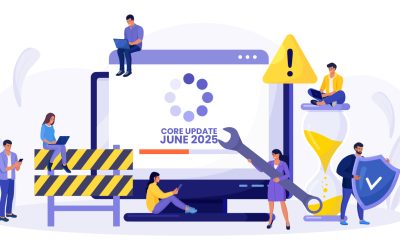In today’s highly competitive online landscape, businesses are increasingly recognizing the importance of search engine optimization (SEO) to improve their online visibility and attract organic traffic. An organic SEO company plays a pivotal role in helping businesses optimize their websites and content. However, simply creating and optimizing content without a strategic tactic may not yield the desired results. This is where content mapping comes into play.
Content mapping involves adopting a systematic approach to align content creation and distribution with the various stages of the customer journey. By analyzing the needs and interests of the target audience at each stage, a content map helps a company deliver the right content, at the right time, and through the right channels. It ensures that the content strategy is tailored to meet the specific requirements of the audience, ultimately driving engagement, conversions, and business growth.
Importance of Creating a Content Map
By mapping out the content creation and distribution process, a business can ensure that their content is relevant, personalized, and provides value to the target audience at each stage. This strategic approach not only enhances the customer experience but also improves the business’ visibility in search engine rankings, as the content aligns with the keywords, topics, and search intent.
Here are some key reasons why content mapping is crucial for creating impactful content:
- Clear understanding of the customer journey – Content mapping enables you to gain a deep understanding of the target audience’s journey — right from the awareness stage to the decision-making stage. It helps identify the specific touch points where the target audience requires information and guidance.
- Audience-focused approach – Content mapping ensures that the content is aligned with the needs, interests, and pain points of the target audience. By understanding their journey and mapping out content accordingly, you can create content that resonates with them at each stage. This audience-focused approach increases the relevance and value of your content, leading to higher engagement and conversions.
- Strategic content planning – Mapping out the content facilitates strategic planning. You can identify the different types of content required at different stages of the buyer’s journey and create a cohesive content plan. This helps you provide consistent messaging, maintain a logical flow, and avoid content gaps or redundancies. It also ensures that your content serves a purpose and contributes to your overall marketing objectives.
- Personalized and relevant content delivery – You can create relevant content that addresses the specific needs, pain points, and questions of your audience at each stage of their journey.
- Improved lead nurturing and conversion – Content mapping helps to develop a comprehensive content strategy that guides your prospects through the buyer’s journey. By providing targeted content at each stage, you can nurture leads effectively, and build stronger relationships.
- Improved content distribution – Content mapping helps you determine the most effective channels and platforms to distribute your content. You can categorize which channels are most relevant and preferred by your target audience at different stages of their journey. This allows to optimize your content distribution strategy, increase visibility, and reach your audience where they are most likely to engage with your content.
- Data-driven decision making – Content mapping involves analyzing data and insights about the target audience’s behavior, preferences, and engagement patterns. By monitoring the performance of the content at each stage, you can gather valuable data that informs your content optimization efforts. You can identify what content is resonating, what needs improvement, and make data-driven decisions to enhance your content strategy.
How to Create a Strategic Content Map
A sound content marketing distribution plan relies on the foundation of a strategic content map. It is not possible to choose content distribution channels unless you have already mapped your content.
Strategic content mapping comprises the following steps –
- Identify the Buyer Persona – Also known as a user persona/marketing persona/audience persona, a buyer persona is a framework that represents segments of your target consumers. It is the semi-fictional, generalized representation of your target audience groups. They help you understand your customers (and prospective customers) better, and make it easier to tailor content to meet the specific needs, behaviors, and concerns of different groups. A buyer persona combines market research, your data about your target audience, and a few assumptions based on that data. The buyer persona provides an in-depth insight into characteristics such as – demographics (factors like gender, age, income, education, etc.), values and goals (beliefs, personal and professional goals, lifestyle habits, personality traits), fears and challenges, sources of information, work (job title, industry) and buying habits and patterns.
By analyzing this information, you can easily visualize your ideal customer. Buyer personas can be created using your existing customer base by identifying the qualities these customers share and why they purchased your product or service. Another easy method to build buyer personas would be to approach your customers for a survey or a personal interview.
- Document the Customer Journey – Customer journey is the term used to define the entire experience a customer has during their communication with a brand or a company. In other words, it is the communication roadmap, which begins right from the stage of discovering the brand, engaging with the brand, evaluating, and making an actual purchase to the post-purchase experience. It helps outline some crucial details at each phase, like finding out what questions are likely to arise in the customers’ minds, anticipating customer actions and touching the points the customer is experiencing in any particular phase of the marketing funnel. In addition, customer journey considers the effect of the interactions between the brand and the customer.
Determine the types of content that will be most effective at each stage of the customer journey. This can include blog posts, videos, infographics, case studies, whitepapers, social media content, email newsletters, and more. Consider the formats that align with your audience’s preferences and the information they are seeking at each stage.
- Align Content Topics and Keywords – Identify the specific topics and keywords that are relevant to each stage of the customer journey. Conduct keyword research to understand what your audience is searching for and incorporate those keywords into your content strategy. This ensures your content aligns with their search intent and increases its visibility.
- Conduct a Content Analysis – Match and analyze the buyer personas you have created and the existing content to see if they cater to each other. Try to select and organize the content according to the target audience’s needs. As part of the content analysis, it is important to consider the following factors –
- What type of content fits a particular phase in the customer journey?
- Content’s conversion point
- Identify the call to action in the content
- Identify the content quality
- Determine Content Distribution Channels – Choose the most effective channels for distributing your content at each stage. Consider your audience’s preferred channels, such as social media platforms, email newsletters, industry forums, or other relevant platforms. Modify your content to fit the requirements and characteristics of each channel.
- Create a Visual Representation – Visualize your content map by creating a visual representation, such as a flowchart or spreadsheet. Use this visual representation to outline the content types, topics, keywords, and distribution channels for each stage of the customer journey. This will help you visualize the entire content strategy and ensure a cohesive approach.
- Monitor and Refine – Create a catalog of the content that you already have. You can audit the content by title, category, type, quality, etc. Regularly monitor the performance of your content at each stage of the customer journey. Analyze data such as engagement metrics, conversion rates, and feedback from your audience. Use these insights to refine your content map and make data-driven adjustments to your content strategy over time.
Remember that content mapping is an iterative process that requires ongoing analysis, testing, and optimization to ensure that the content remains relevant and effective. By following the above-mentioned steps, you can create a content map that guides content creation and distribution, aligns with the target audience’s needs, and thereby helps achieve content objectives at each stage of the customer journey.
In short, content mapping helps create content that resonates with the audience, enhances the customer experience and ultimately drives engagement. It also ensures that the content is purposeful, relevant, and impactful throughout the customer journey. Companies can invest in content writing services to create informative, interesting and useful content that is relevant for their target audience and helps increase traffic and ranking.




